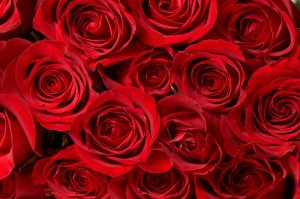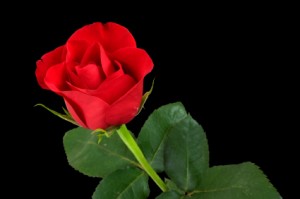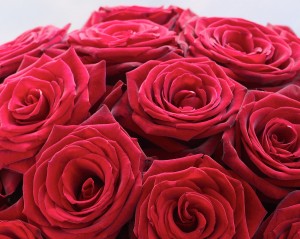News
How to care for cut roses
 This Valentine’s Day bouquets of red roses will be sent across the world in celebration of this romantic occasion. After all, it is the most popular cut-flower in the world and for centuries it has been used as a symbol of love and passion.
This Valentine’s Day bouquets of red roses will be sent across the world in celebration of this romantic occasion. After all, it is the most popular cut-flower in the world and for centuries it has been used as a symbol of love and passion.
In order to help you keep your flowers looking their best for the longest time possible, there are a few simple rules to follow in order to keep your bouquet of Valentine’s Day roses fresher for longer.
- Roses need lots of water and they need it right away so it is best to arrange your flowers as soon as possible and get them into a vase with fresh water.
- Remove dead or wilting leaves and discard any broken heads or wilting flowers
- Cut approximately 2cm from each stem while holding it under running water. Always use a sharp pair of scissors or secateurs as anything blunt risks damaging the stems and the flower’s ability to absorb water.
- The vase you are using needs to be clean and free from bacteria. Wash it with warm soapy water and thoroughly rinse before use.
- Use the flower food that comes with your bouquet and follow the instructions carefully. Home-made mixtures such as bleach or copper coins are rarely as effective as proper flower food.
- Leaves, stems or thorns that fall below the water level in your vase once the flowers have been placed in it should be removed as these will cause algae and bacteria to form.
- Roses prefer lukewarm water rather than cold water as it helps them to absorb nutrients more efficiently.
- Changing the water every two or three days
- Once arranged to your liking, keep your bouquet out of direct sunlight and away from cold draughts.
- If any of the flower heads die, remove them from the bouquet – this will help to keep the rest of the bouquet healthy
Twelve Red Roses
 The red rose is an internationally recognised symbol of passion and love, so it is no wonder that on Valentine’s Day it is the most popular cut-flower in the world. Whether you are sending a single stem to a secret crush or a stunning bouquet of 100 blooms to the special someone in your life, red roses show your true feelings for someone with a touch of style and luxury.
The red rose is an internationally recognised symbol of passion and love, so it is no wonder that on Valentine’s Day it is the most popular cut-flower in the world. Whether you are sending a single stem to a secret crush or a stunning bouquet of 100 blooms to the special someone in your life, red roses show your true feelings for someone with a touch of style and luxury.
The red rose also comes in a wide variety of shapes and sizes to choose from, ranging from small headed, pinkish flowers to large deep crimson varieties. Here we have listed our top 12 red roses for Valentine’s Day to help you make a lasting impression on your loved one.
Heart’s Desire – First introduced in 1942, this rose comes in a dark red colour and has a heady fragrance
Crimson Queen – A fragrant hybrid rose that was first created in the UK in 1890 by breeder William Paul
Red Sweetheart – Also known as a Polyantha, this hybrid red rose has a lightly spicy fragrance and was first created in 1944 in the United States
Black Magic – A large hybrid tea rose that comes in dark red with a sweet, mild fragrance. It was created in 1995 in Germany and introduced to the US in 2001
Candella – A medium red hybrid tea rose, the Candella was first created in 1996 in New Zealand and is also known as ‘Eternally Yours’.
Don Juan – This climber has large flowers in dark red and has a citrus fragrance. It was created in Italy in 1958
Ingrid Bergman – Named after the famous actress, this rose has a large head, a spicy scent and was first introduced to the world in 1985
Grand Prix – This dark red hybrid tea rose was first bred in the Netherlands and is one of the most popular choice for Valentines Day flowers in the world
Prospero – A deep crimson English rose that was introduced in 1982 by famous Wolverhampton rose breeder David Austin
Belle Rouge – A charming hybrid tea rose that comes in a deep red/purple colour and was first created in Paris, France in 1956
Freedom – A hybrid tea rose that has a wonderfully vibrant bright red colour and was first introduced in Germany in 2004 by Hans Jürgen Evers
Scarlet – A dark red mini-flora that was created in Denmark in 1987, this flower has a very mild fragrance and neat, rounded flower heads.


